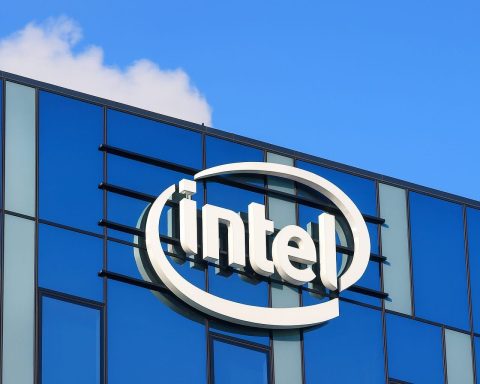Key facts (today)
- Inflation matched forecasts. August PCE rose 0.3% m/m (headline 2.7% y/y; core 2.9% y/y), easing fears of a hotter print. 10‑yr Treasury ~4.18%, 2‑yr ~3.65% after the release. [1]
- Stocks bounced. By early afternoon, the S&P 500 and Dow were up ~0.5% and the Nasdaq ~0.4%, clawing back part of a 3‑day slide. [2]
- Rate‑cut path: Swaps priced ~20 bps of easing in October and ~38 bps by year‑end, a modestly dovish path vs. earlier in the week. [3]
- Tariffs back in focus. The White House unveiled 100% tariffs on branded/patented drug imports, 25% on heavy trucks, and 30–50% on furniture/cabinets, effective Oct. 1; carve‑outs apply for firms building U.S. plants. [4]
- Global pushback & workarounds: The EU and Japan said July agreements effectively cap pharma tariffs well below 100% for their exporters; AstraZeneca moved to cut certain U.S. drug prices via direct‑to‑patient sales. [5]
- Sector movers: Truck maker Paccar rallied on domestic exposure; home furnishing names slipped on tariff risk; Eli Lilly and Viking Therapeutics edged higher; Intel and GlobalFoundries popped on chip headlines. [6]
- Oil: Crude headed for its biggest weekly gain in ~3 months on Russian fuel export curbs — a tailwind for energy equities and inflation‑sensitive narratives. [7]
- Valuation check: The S&P 500’s forward P/E is ~22.6–22.8, above 5‑ and 10‑year averages. [8]
- Earnings setup: FactSet’s latest Q3 2025 S&P 500 EPS growth estimate = 7.7% y/y; revenue growth ~6.3%, with IT leading. [9]
- Macro backdrop: The BEA’s Q2 GDP was revised up to 3.8% (annualized), driven by consumer spending; next jobs report (which could be delayed by a government‑shutdown risk) is the near‑term catalyst. [10]
- AI & yields: Analysts warn higher long‑term yields could cool debt‑funded AI capex that’s powered mega‑cap gains. [11]
The U.S. stock market today — what moved prices
1) The data that mattered: PCE & spending
Markets exhaled as the Fed’s preferred inflation gauge arrived exactly as expected: headline PCE +0.3% m/m (2.7% y/y), core +0.2% m/m (2.9% y/y). Treasury yields drifted lower, with the 10‑yr near 4.18% and the 2‑yr around 3.65%, signaling relief that there was no upside shock. Futures ticked higher on the print. [12]
“This should give some reassurances on the inflation side,” said Doug Beath of Wells Fargo Investment Institute. [13]
Consumer spending stayed solid in August, adding to this week’s Q2 GDP revision to 3.8%. The resilience complicates the Fed’s job (growth strong, inflation easing only slowly) but supports corporate revenue trajectories into Q4. [14]
“Net‑net, the data show consumers continue to spend and the economy may not be slowing as quickly as anticipated,” noted Gennadiy Goldberg of TD Securities. [15]
2) Rates, the Fed and the curve
Pricing in swaps points to ~20 bps of easing in October and ~38 bps by year‑end after today’s numbers. The curve is positively sloped again (10‑yr above 2‑yr), and Fed officials are signaling a balance between jobs and inflation risks. [16]
Richmond Fed’s Thomas Barkin said he has “very low confidence in inflation forecasts right now,” underscoring policy uncertainty heading into Q4. [17]
“Inflation remains sticky, but it’s not accelerating in a way that would block at least one more cut this year,” said Peter Cardillo of Spartan Capital. [18]
3) Tariffs: who wins, who loses
The White House’s 100% tariff on branded/patented drug imports, 25% on heavy trucks, and 30–50% on furniture/cabinets jolted sector sentiment. Paccar outperformed on its U.S. footprint; home‑goods retailers lagged. Pharma’s reaction was mixed as EU and Japan cited July agreements they say limit duties for their exporters, and AstraZeneca rushed out price cuts and a direct‑to‑patient channel for some drugs. [19]
4) Micro movers & headlines
- Intel rose after reports it approached TSMC for investments/partnerships; GlobalFoundries rallied on talk of a new U.S. chip rule to curb overseas reliance. [20]
- Boeing gained as reports indicated the FAA will partially return “ticketing” authority on some 737 MAX/787airworthiness certificates beginning next week (production cap remains). [21]
- Energy sentiment firmed with oil on track for its biggest weekly rise in ~3 months amid Russian fuel export curbs. [22]
- Costco—a widely watched consumer bellwether—delivered mixed Q4 optics: solid top/bottom‑line, slightly soft same‑store sales, and membership dynamics in flux; AP noted shares dipped earlier. [23]
5) Valuations, breadth and AI’s bill
Even after this week’s wobble, U.S. equities trade rich to history: forward P/E ~22.6–22.8 vs. 10‑yr avg ~18.5–18.7. Wall Street’s debate: can EPS catch up (FactSet’s Q3 growth +7.7%) fast enough to justify multiples? Meanwhile, macro strategists warn that higher real long‑term yields could cool debt‑funded AI data‑center capex that has driven mega‑cap leadership. [24]
Jay Hatfield: “If you’re first, bubbles don’t matter.”
Jay Goldberg (Seaport): “We are getting into bubble territory.” [25]
Expert sound bites you can use
- Wells Fargo Investment Institute (Beath): “This should give some reassurances on the inflation side.” [26]
- TD Securities (Goldberg): “Consumers continue to spend and the economy may not be slowing quite as quickly.” [27]
- Spartan Capital (Cardillo): “Inflation remains sticky, but not accelerating enough to block another cut.” [28]
- Bokeh Capital (Forrest): The labor market is likely more important to the Fed’s next move. [29]
- Citi (Nathan Sheets): “More inflation pass‑through is still to come” as inventories clear and tariffs filter into prices. [30]
- Richmond Fed (Barkin): “Very low confidence in inflation forecasts right now.” [31]
- Analysts to Axios: “Don’t miss the rally” vs. “bubble territory” warnings — the split that defines 2025. [32]
Forecasts & scenarios (near term)
Earnings & multiples
- Base case: Q3 EPS +7–8%, revenue ~6% (FactSet), with IT and Communication Services leading; valuations stay elevated but workable if earnings broaden beyond mega‑cap tech. [33]
- Bull case: Softer labor data + steady disinflation = 2–3 more cuts by year‑end, multiple expansion resumes; breadth continues to improve (the “un‑Magnificent 493” theme). [34]
- Bear case: Tariff pass‑through + sticky services inflation → yields stay high, AI capex cools at the margin, leaving stretched P/E vulnerable. [35]
Policy path, as priced
Swaps imply ~20 bps of additional easing in October and ~38 bps by year‑end; that’s consistent with a gradual, data‑dependent Fed that wants to support jobs without re‑igniting inflation. [36]
Wild cards to watch
- Tariffs: scope, exemptions, and corporate workarounds (e.g., direct‑to‑patient pharma) will drive sector dispersion. [37]
- Bond market: if 10‑yr drifts materially higher, equity duration (growth/AI) could re‑rate; if it eases, the multiple may hold. [38]
- Macro prints: jobs report next week (timing could slip if shutdown risk materializes). [39]
- Energy: supply shocks that keep crude firm complicate the disinflation path. [40]
Today’s biggest storylines, in one place
- PCE in line; yields slip; stocks rebound — intraday gains across the majors after the inflation print. [41]
- Tariffs ripple across sectors — trucks, furniture, and pharma in focus; carve‑outs and alliances shape market reaction. [42]
- AI & rates — strategists caution that high long‑term yields could slow capex‑heavy AI build‑outs supporting mega‑caps. [43]
- Earnings math — Q3 EPS +7.7% expected; breadth improving but valuations elevated vs. history. [44]
- Boeing watch — FAA poised to partially restore certification authority on some 737 MAX/787 deliveries. [45]
Context that shaped today’s tape
- Earlier this week the S&P 500 and Nasdaq notched fresh record highs before a mid‑week pullback on valuation and Fed caution headlines. [46]
- Q2 GDP surprise to 3.8% annualized highlighted steady consumption; today’s PCE keeps “soft‑landing” hopes alive—not a green light for aggressive cuts, but not a red light either. [47]
What to watch next week
- Nonfarm payrolls / unemployment rate — guidance for the October and December Fed meetings; breadth of hiring vs. wage trends. A shutdown could delay release. [48]
- ISM data and jobless claims — momentum check on goods/services. (Consensus focus flagged across today’s coverage.) [49]
- Tariff implementation (Oct. 1) — watch pass‑through to pricing and company guidance in tariff‑exposed industries. [50]
Sources & quoted experts (selected)
- Inflation & market reaction: Reuters PCE wrap and market color; inline quotes from Wells Fargo II, TD Securities, Spartan Capital, Bokeh Capital, and Richmond Fed’s Barkin. [51]
- Intraday moves & sectors: AP midday recap. [52]
- Tariffs: Reuters explainer and update; Politico brief; EU/Japan responses; AstraZeneca pricing action. [53]
- AI & yields: Reuters (Joachim Klement commentary). [54]
- Valuation/EPS: FactSet Earnings Insight (Sept. 19), plus Reuters valuation context. [55]
- Oil: Reuters energy wrap (weekly gain on Russia fuel exports). [56]
- Fed expectations: Bloomberg swaps/curve pricing. [57]
- Boeing/FAA: Reuters update on partial return of airworthiness certificate authority. [58]
- Rally vs. bubble debate: Axios survey of strategists (Jay Hatfield, Jay Goldberg). [59]
Note: Index moves cited are intraday snapshots from today’s reporting and can change by the close. This report is informational and not investment advice.
References
1. www.reuters.com, 2. apnews.com, 3. www.bloomberg.com, 4. www.reuters.com, 5. www.reuters.com, 6. www.reuters.com, 7. www.reuters.com, 8. www.factset.com, 9. www.factset.com, 10. www.bea.gov, 11. www.reuters.com, 12. www.reuters.com, 13. www.reuters.com, 14. www.reuters.com, 15. www.reuters.com, 16. www.bloomberg.com, 17. www.reuters.com, 18. www.reuters.com, 19. www.reuters.com, 20. www.reuters.com, 21. www.reuters.com, 22. www.reuters.com, 23. apnews.com, 24. www.factset.com, 25. www.axios.com, 26. www.reuters.com, 27. www.reuters.com, 28. www.reuters.com, 29. www.reuters.com, 30. www.reuters.com, 31. www.reuters.com, 32. www.axios.com, 33. www.factset.com, 34. www.reuters.com, 35. www.reuters.com, 36. www.bloomberg.com, 37. www.reuters.com, 38. www.reuters.com, 39. www.reuters.com, 40. www.reuters.com, 41. apnews.com, 42. www.reuters.com, 43. www.reuters.com, 44. www.factset.com, 45. www.reuters.com, 46. www.reuters.com, 47. www.bea.gov, 48. www.reuters.com, 49. www.reuters.com, 50. www.reuters.com, 51. www.reuters.com, 52. apnews.com, 53. www.reuters.com, 54. www.reuters.com, 55. www.factset.com, 56. www.reuters.com, 57. www.bloomberg.com, 58. www.reuters.com, 59. www.axios.com








